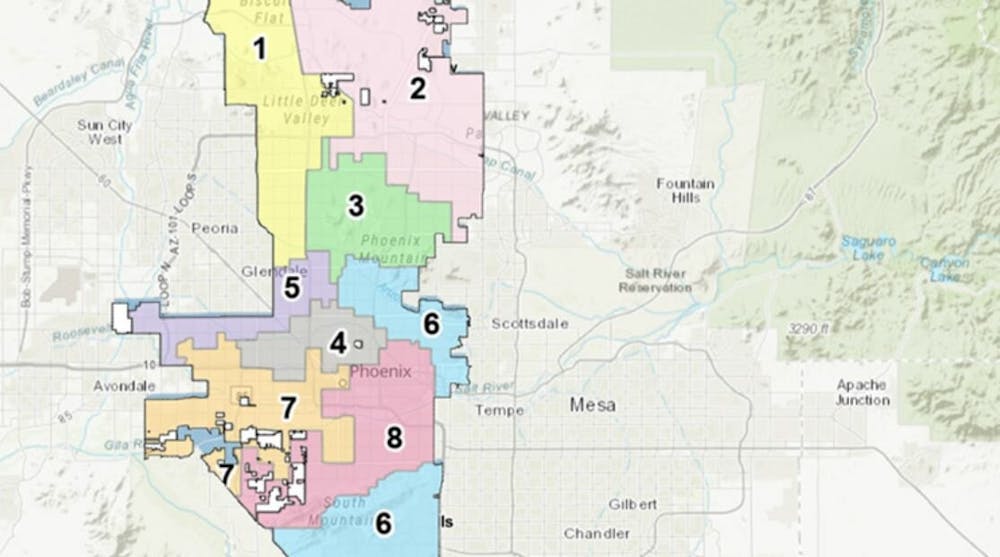Every ten years, the City of Phoenix modifies city district boundaries in response to the U.S Census. On Sept. 11, members of the redistricting process met for a citywide community meeting to discuss and receive feedback on two new alternative district maps.
There are eight council districts in the City of Phoenix, all of which have grown significantly in population since the 2010 U.S. Census.
Districts 2, 5, 7, and 8 had a higher population growth compared to Districts 1, 3, 4, and 6. The city reevaluates and creates new border lines in order to create an even population count, the desired number for this year being 201,017 people per district.
When it comes to redistricting processes, issues of gerrymandering, the manipulation of electoral districts to favor one party, have been cited as primary concerns due to the potential impact on Phoenix community representation in elections.
Priti Mathur, Partner at ARCBridge Consulting, the firm consulted by the City of Phoenix to manage the redistricting process, said this wasn’t a concern, however, due to city redistricting requirements.

(City of Phoenix/phoenix.gov)
“Anytime you talk about redistricting, you definitely talk about gerrymandering.” Mathur said, “What we have done for the City of Phoenix is we have made sure that each district complies with the maximum deviation requirements as well as the majority/minority population.”
The City of Phoenix, to ensure population equity, mandates there must be a maximum deviation of population of 5% for all districts with a maximum of 1% for individual districts. Compliance with the Voting Rights Act is also a requirement for the redistricting process in order to maintain minority votes, which Mathur said was applied to the proposed district maps.
“We continue to maintain four majority Hispanic districts and four majority non-Hispanic districts, not only at the total population but as well as in the voting age population,” Mathur stated. Mather presented two proposed council district maps, labeled as Alternative A and Alternative B. The two maps were the product of a lengthy round of the redistricting process in June.
Denise Archibald, Phoenix City Clerk, has worked with the public to provide access to information, government documents, and city council statistics throughout the redistricting process.
“We provided information to the community on the Census data at the time, the redistricting process, the process to provide community input, also on how to create their own redistricting maps,” said Archibald.
This process was open for public submissions until August 1, where all submissions were then reviewed by the redistricting consultants to create the proposed city council districts.
Round two of the redistricting process ended on Sept. 11, it was the final stage with community input meetings.
The proposed city council districts will move forward with a city council meeting on Tuesday, Sept. 26, which will be open to the public. The Phoenix City Council will vote on the proposed boundaries.
The selected plans will become effective Jan. 1, 2024. There is a General Election in Nov. 2024.

